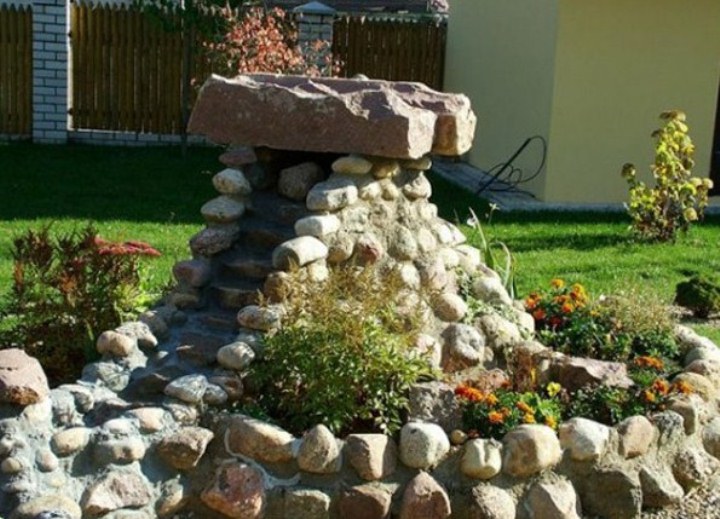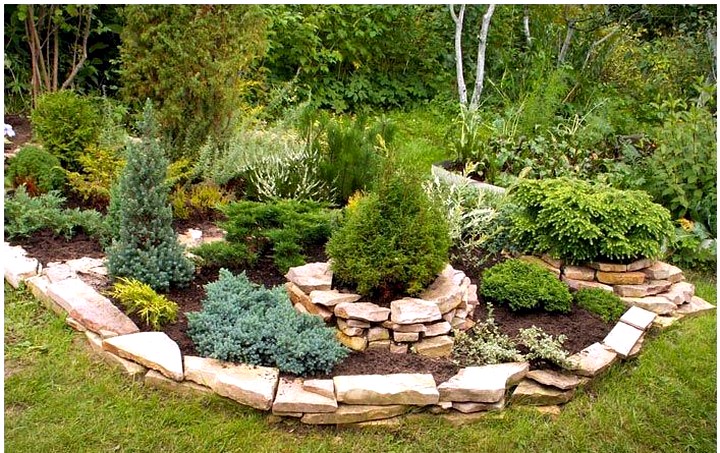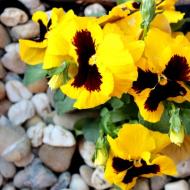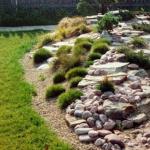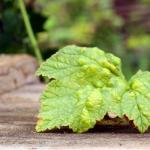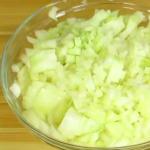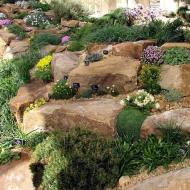
Do-it-yourself Alpine slide: step by step photo instruction
An alpine hill in the country is not only a fashionable element of landscape design, but also an effective option for creating a flower garden that does not require special and careful care. Indeed, for the rock garden, unpretentious perennial slow-growing plants are selected that feel fine on poor soils and without regular watering.
The alpine slide is a piece of wild nature created by one's own hands, a decoration of the garden, which is an accent spot in its design. For her, you need to choose a place that is well visible from all sides. But do not forget that sunlight is of great importance for plants. It is better to opt for a site located at a distance from buildings and trees with a voluminous crown. If it is difficult to find such a place, then preference should be given to the south side, illuminated by the sun at the most suitable time of the day.
You can engage in the arrangement of rock garden at any convenient time of the year. But the best option is early autumn. At this time, gardeners have some free time between harvesting and preparing plants for winter. Therefore, you can calmly and slowly begin to be creative, creating something unusual, amazing and original in the garden. After all, at first glance, it seems that the stones are scattered randomly, and the plants are planted where necessary. A rock garden is a great way not only to test your design abilities, but also to polish your spatial vision, imagination, and make sure, thanks to the opinions of others, that everything is in order with its creator’s sense of beauty. The rock garden, created in the fall, will give a natural draft over the winter, settle in its place as it suits him, taking into account all the nuances invisible to the eye. And in the spring, before planting, shortcomings will become visible, which will not be too late to correct. Therefore, if an autumn planting is planned, then the creation of an alpine slide in the country with your own hands (photo) should be started a few months before. Professional designers have long developed typical schemes for arranging an alpine hill, taking into account all the smallest nuances associated with its location and the desire to plant certain plants: If the rock garden is located in the center of the site, it can be viewed from all sides, then its shape should resemble a pyramid with the highest point in the center of the composition. Not necessarily this design has the same sides and the highest point in the middle of the rock garden. The less symmetry is maintained, the more interesting the composition is; A rock garden on a slope can be either single-level, parallel to the slope surface, or multi-level, reducing the height of elements and plants from a further point down; The smaller the size of the horizontal elements, the more original the visual perception of the slide, the more interesting it is to consider it, each time coming across a completely new view, just changing the viewing angle. A properly equipped alpine slide (photo) should resemble a wild forest, constantly surprising with new discoveries. Its height depends on the area occupied by the slide. In the classic version, there should be about 20 cm of height above the ground per meter of approximate diameter at the base. Often, arranging an alpine slide in a country house with your own hands comes down to creating a certain composition of stones and planting plants between them. But it's not right. Over time, such a rock garden will lose its decorative effect and even its original shape. Therefore, before proceeding with the creation of this kind of work of art, one should scrupulously approach the preparatory work, which consists in the proper preparation of the site, the selection of soil and plants. And work should begin with a drainage device. The drainage system under the alpine hill in the country (photo) is not only an opportunity to create the most suitable microclimate for plants, often very expensive, but also to put together the whole composition. After all, the earth will eventually sag under the weight of the stones, and the rigid drainage filling will be able to keep them in their original position. Stones, crushed stone, broken bricks, any construction waste other than wood are suitable for drainage. The depth of the drainage pit depends on the size of the future rock garden. In this case, it is better to do it deeper than shallower - with an area of \u200b\u200bthe future mini-garden of 7-8 meters, it is enough to dig a pit to a depth of three bayonets of a shovel, which is about a meter. Limestone, sandstone, tuff, granite are suitable for an alpine slide. A few recommendations that will help create a more embossed and interesting composition: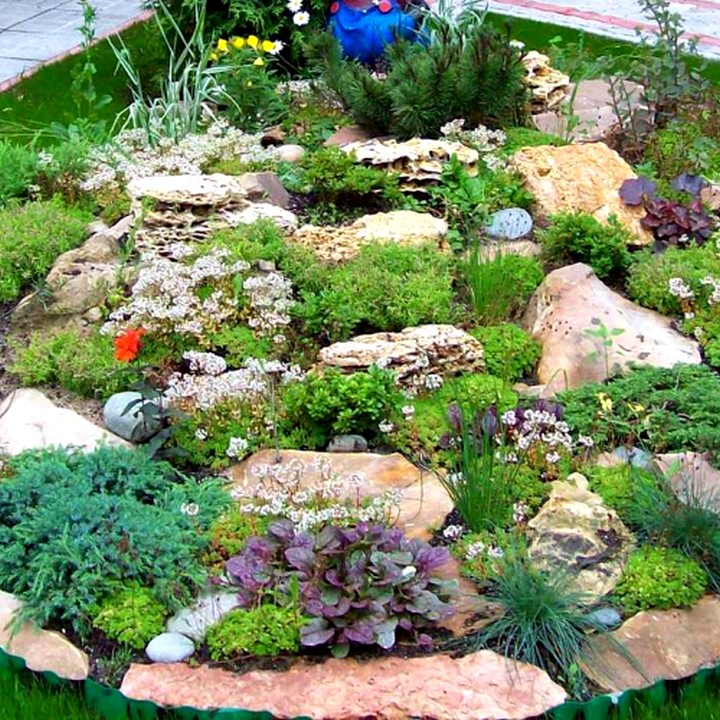
When is it better to start creating an alpine slide with your own hands
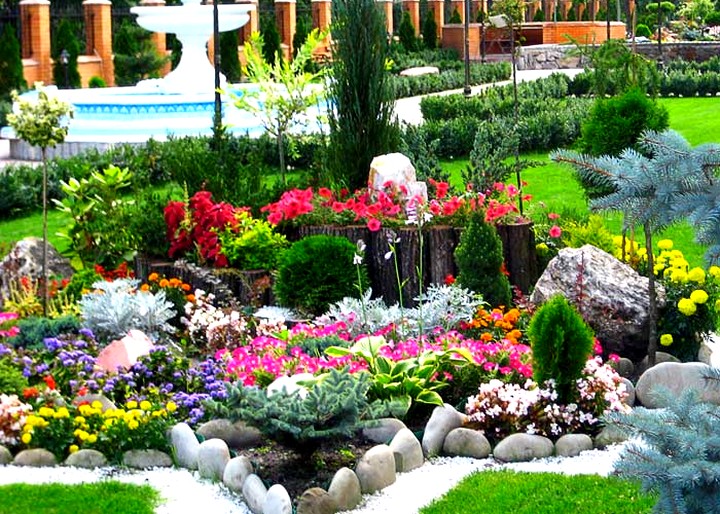
Basic rules for arranging an alpine slide
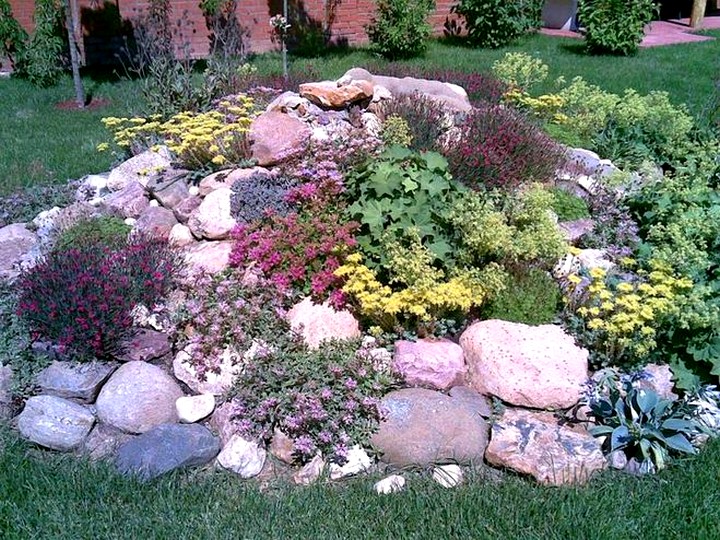
How to make an alpine slide in the country
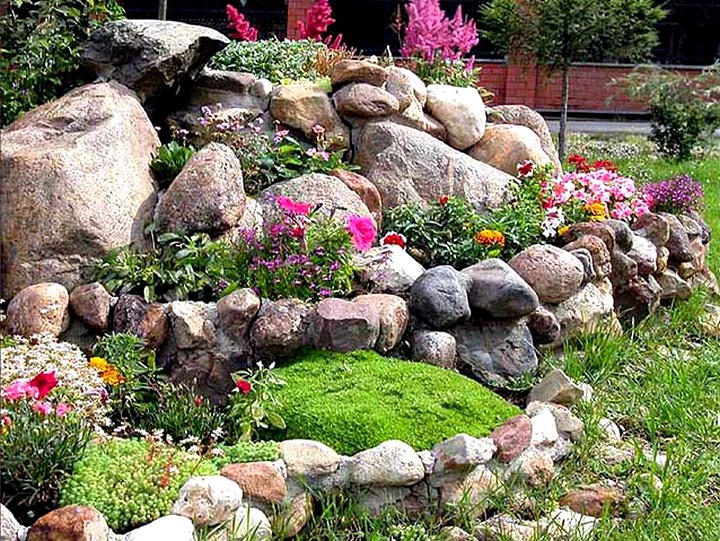
Drainage device
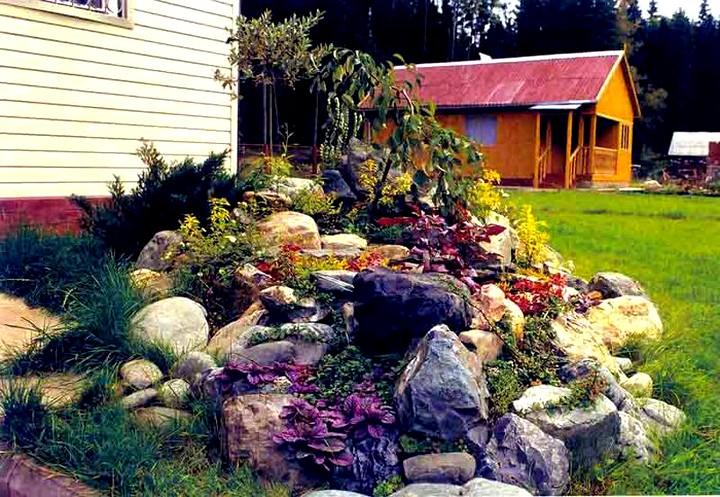
Selection of stones


